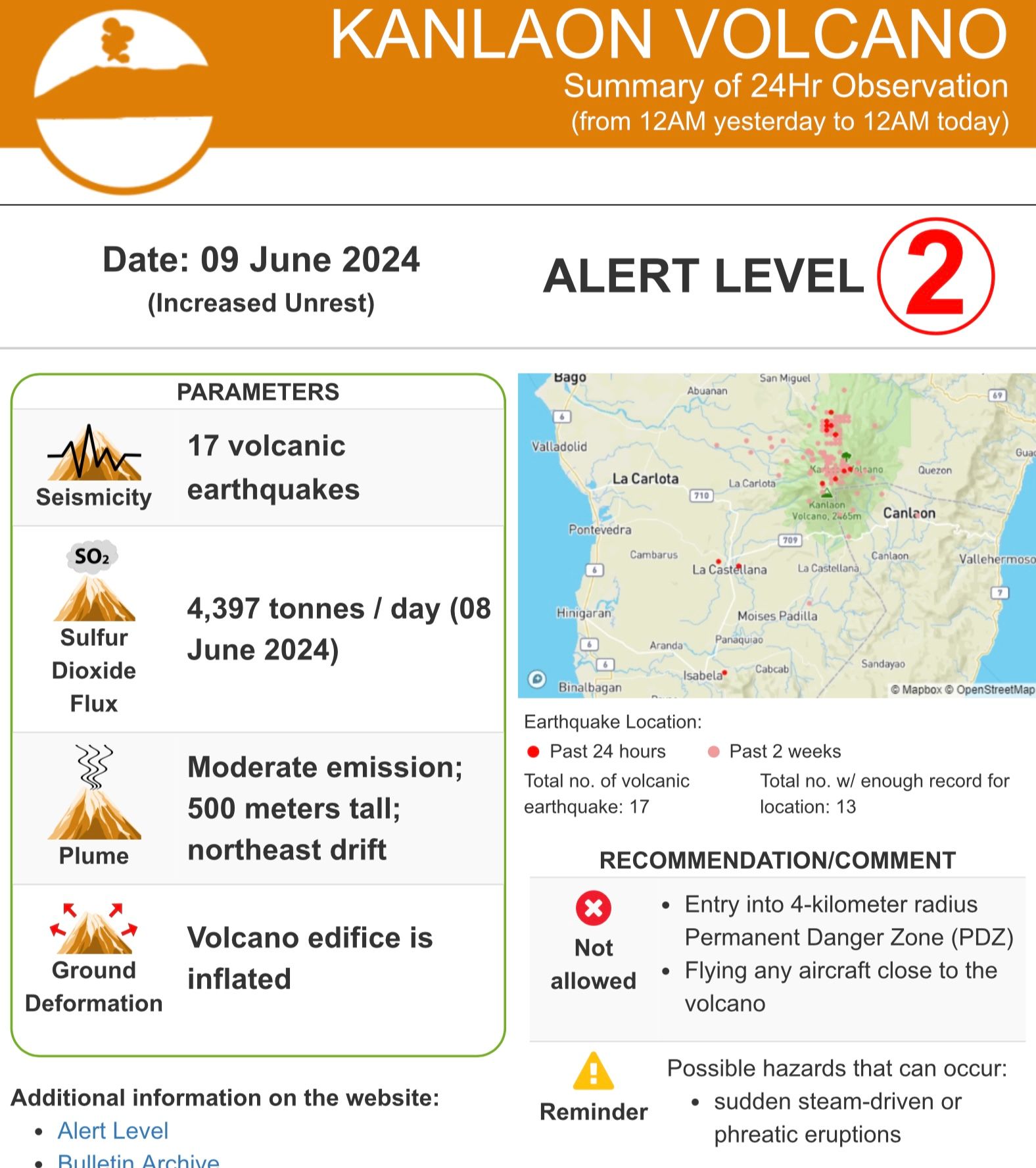Kanlaon Volcano's gas emissions produce 500-meter-high plume

The Philippine Institute of Volcanology and Seismology (Phivolcs) recorded the highest sulfur dioxide emissions from Kanlaon Volcano so far this year in the past 24 hours, resulting in the generation of a 500-meter-high plume.
In its 8 a.m. volcano bulletin on Sunday, June 9, Phivolcs said Kanlaon Volcano’s sulfur dioxide (SO2) flux was recorded at 4,397 tons on June 8, which was higher than the 1,412 tons recorded the previous day.
“This is the highest emission this year measured by campaign survey and the second highest land-based measurement for Kanlaon,” it said.
Phivolcs observed that Kanlaon has been emitting higher concentrations of volcanic SO2 this year, averaging 1,458 tons per day.
However, since the eruption on June 3, the emissions have elevated significantly, reaching an average of 3,347 tons per day.
In the past 24 hours, Phivolcs said Kanlaon Volcano’s degassing activity resulted in the emission of a 500-meter-high plume before it drifted northeast.
It also recorded 19 volcanic earthquakes, which was slightly higher than the 17 volcanic quakes recorded in the last 24 hours.
Alert Level 2 still in effect
Phivolcs said Alert Level 2 is maintained as Kanlaon Volcano is still experiencing “increased” volcanic unrest.
This indicates elevated levels of volcanic earthquake, temperature, acidity, and volcanic gas concentrations in monitored springs and fumaroles, as well as the potential for steam and ash explosions from the summit crater or new vents, and inflation or swelling of the volcano’s edifice.
Phivolcs reminded the public that entry into the four-kilometer radius permanent danger zone (PDZ) is strictly prohibited.
Some parts of these barangays (villages) are located within the PDZ, which includes Ara-al and Yubo in La Carlota City; Sag-ang, Mansalanao, Cabagnaan, and Biaknabato in La Castellana; Minoyan, Murcia; Masolog, Pula, and Lumapao in Canlaon City; and Codcod in San Carlos City.
Phivolcs urged the local government units, disaster officials, and the public to avoid the PDZ because the likelihood of similar explosive eruptions occurring is high, increasing the threat of volcanic hazards such as pyroclastic density currents and ballistic projectiles within the PDZ.